Ent Surgeon In Mumbai
OTOSCLEROSIS AND STAPES SURGERY
Otosclerosis — the immobilization of the stapes bone — occurs slowly. Perception of hearing loss is so slow that many people with otosclerosis only become aware of their hearing loss when friends or relatives call it to their attention. Many individuals with otosclerosis compensate for their hearing loss by inadvertently learning to read lips. Sometimes, the lip reading is conscious; at other times the person may be unaware of it. Hearing loss in otosclerosis may be in one, or both ears. When the hearing loss is in both ears, its effects on daily communication are significant.
The first sign of a hearing loss can occur when a person finds themself requesting that others repeat themselves, or noting hearing difficulty when people’s faces are turned away. Noises in the ear usually accompany otosclerosis. The sensation of background noises in the ear, even in the quiet, is called, tinnitus. In otosclerosis, tinnitus may be a broadband hissing sound, discreet tones or pulses. Also, the nerve of hearing is sometimes affected by otosclerosis. The tinnitus may be worse in this case. Tinnitus will go away in about half the cases of otosclerosis when treated surgically. It is uncommon for the tinnitus to worsen after surgery.




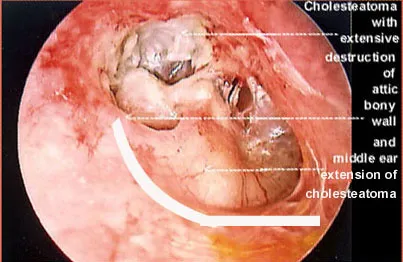

EAR DISCHARGE AND TYMPANOMASTOID SURGERY
Mastoidectomy and tympanoplasty are surgical procedures of the middle ear performed in order to close a hole in the ear drum, remove the infection in the middle ear and mastoid bone and to improve hearing.
The mastoid bone lies behind the ear and is usually made up of many open air cells. Infection of the middle ear may lead to infection of the mastoid (called mastoiditis) and these air cells fill up with pus. Left untreated, bone can even be destroyed and the infection could extend to other important areas of the head such as the brain. If treatment with antibiotics does not clear up the infection, surgery may be needed. Another and more common, reason for mastoid surgery is in the case of a chronic draining ear or when a benign tumor called a cholesteatoma exists.
Exactly how the surgery will be done will depend on which problem you have. Simple mastoid surgery for mastoiditis usually involves an incision directly onto the mastoid bone from behind the ear. Tympanomastoid Surgery is needed for the chronic draining ear or in the case of a cholesteatoma. This surgery involves the middle ear space as well as the mastoid and usually, the incision may be through the tympanic membrane (eardrum) or behind the ear.
COCHLEAR IMPLANT SURGERY
Advances in computer technology as well as in ear surgery itself have given us the opportunity to offer the world of sound, music, and speech to those who would otherwise have spent their lives in a soundless cocoon.
A cochlear implant is a small, complex electronic device that can help to provide a sense of sound to a person who is profoundly deaf or severely hard-of-hearing. The implant consists of an external portion that sits behind the ear and a second portion that is surgically placed under the skin. An implant has the following parts:
- A microphone, which picks up sound from the environment.
- A speech processor, which selects and arranges sounds picked up by the microphone.
- A transmitter and receiver/stimulator, which receive signals from the speech processor and convert them into electric impulses.
- An electrode array, which is a group of electrodes that collects the impulses from the stimulator and sends them to different regions of the auditory nerve.
An implant does not restore normal hearing. Instead, it can give a deaf person a useful representation of sounds in the environment and help him or her to understand speech.
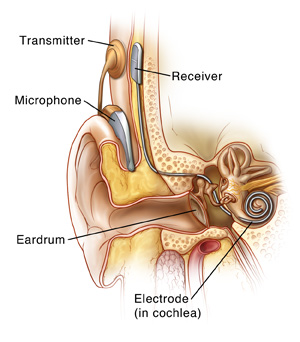





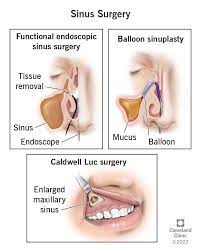

NOSE AND SINUS SURGERY
An endoscopic sinus surgery is usually undertaken to bring relief from chronic rhinosinusitis (inflammation in nose and sinuses that are unrelieved for at least 3 months) that’s not responding satisfactorily to medications. The cause of this inflammation can be anything from infection, allergies, and irritants to polyps (non-cancerous swelling of the nasal/sinus lining). Actually, in quite a few cases, it is difficult to ascertain the root cause of rhinosinusitis.
The goal of surgery is to make drainage of the sinuses better, usually by removing the blockage and draining the mucus. This may mean removing:
- Infected, swollen, or damaged tissue.
- Bone, to create a wider opening for drainage of mucus from the sinuses.
- Growths (polyps) inside the nose or sinuses.
- A foreign object that is blocking a nasal or sinus passage. This usually occurs in children.
Surgery may be the only means of getting a badly blocked, infected sinus to drain properly. But surgery does not always completely eliminate sinusitis. Some people may need a second operation.
SNORING AND SLEEP APNOEA
A good night’s sleep is critical to good health and maintaining the circadian rhythm is vital in maintaining the metabolism of the body. This ensures that all bodily functions work in sync. Unfortunately, in today’s highly competitive world, sleep has become a luxury, and in some, lack of sleep becomes a serious problem. It Reduces the enthusiasm in life, makes the day drowsy, and the nights restless.
hey, are capable of rectifying the cause and bringing back the zest in your life. We have some of the best facilities and surgical expertise in diagnosing and managing Snoring & Obstructive sleep apnea. Obstructive sleep apnea (OSA) also called obstructive sleep apnea syndrome — occurs when there are repeated episodes of complete or partial blockage of the upper airway during sleep.
Obstructive Sleep Apnoea (OSA) is defined as the cessation of airflow during sleep preventing air from entering the lungs caused by an obstruction. These periods of ‘stopping breathing’ only become clinically significant if the cessation lasts for more than 10 seconds each time and occur more than 5 times every hour.




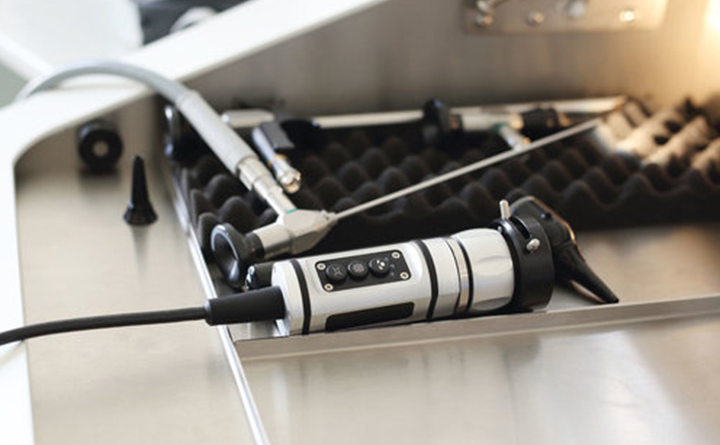



LARYNGOLOGY AND MICROLARYNGEAL SURGERY
Surgery for voice problems is fortunately quite uncommon; most voice disorders can be treated with medications or voice therapy. However, there are certain conditions in which operative measures are necessary. Some benign vocal fold lesions such as cysts or polyps may not respond to more conservative treatment and will need surgery. Surgery is also needed to biopsy or to treat lesions on the larynx that are suspicious for laryngeal cancer.
Laryngology is a subspecialty that deals with the vocal apparatus of the human body or the larynx as it is commonly referred to. Typically the conditions that this branch of medicine deals with are hoarseness of voice, foreign bodies in the upper airway, tumors and cancers affecting the larynx, esophageal reflux and Aspiration problems.
Dr. Priya Shende uses advanced equipment for examinations of the larynx and for precision surgeries of the vocal cord, uses CO2 lasers. Audiologists and rehabilitation experts are also available for assistance.
TONSILLECTOMY AND ADENOID SURGERIES
The tonsils are two clusters of tissue located on both sides of the back of the throat. Adenoids sit high in the throat behind the nose and the roof of the mouth. Tonsils and adenoids are often removed when they become enlarged and block the upper airway, leading to breathing difficulty. They are also removed when recurrence of tonsil infections or strep throat cannot be successfully treated by antibiotics. The surgery is most often performed on children.
The procedure to remove the tonsils is called a tonsillectomy; excision of the adenoids is an adenoidectomy. Both procedures are often performed at the same time; hence the surgery is known as a tonsillectomy and adenoidectomy, or T&A.
T&A is an outpatient surgical procedure lasting between 30 and 45 minutes and performed under general anesthesia. Normally, the young patient will remain at the hospital or clinic for several hours after surgery for observation. Children with severe obstructive sleep apnea and very young children are usually admitted overnight to the hospital for close monitoring of respiratory status. An overnight stay may also be required if there are complications such as excessive bleeding, severe vomiting, or low oxygen saturation.






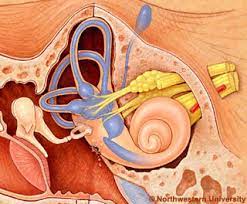

VERTIGO
While vertigo or dizziness as it is commonly referred to, may seem trivial to many, it is far from that. The human body has a very complex balance maintenance system that requires the brain to coordinate and integrate inputs from different parts like the muscles, joints, eyes, ears and more. When there is an imbalance in any of these, then this could mean that body part is under stress or disease which is resulting in a person experiencing vertigo. Considering how complex this is, diagnosing a case of vertigo requires multiple inputs from specialists in different fields. Some of the conditions we treat are Meniere’s syndrome, benign paroxysmal positional vertigo (BPPV) and Vestibular Neuritis (labyrinthitis) hat.
Vertigo is the feeling that you or your environment is moving or spinning. It differs from dizziness in that vertigo describes an illusion of movement. When you feel as if you yourself are moving, it’s called subjective vertigo, and the perception that your surroundings are moving is called objective vertigo.
Treatment for vertigo depends on what’s causing it. In many cases, vertigo goes away without any treatment. This is because your brain is able to adapt, at least in part, to the inner ear changes, relying on other mechanisms to maintain balance.